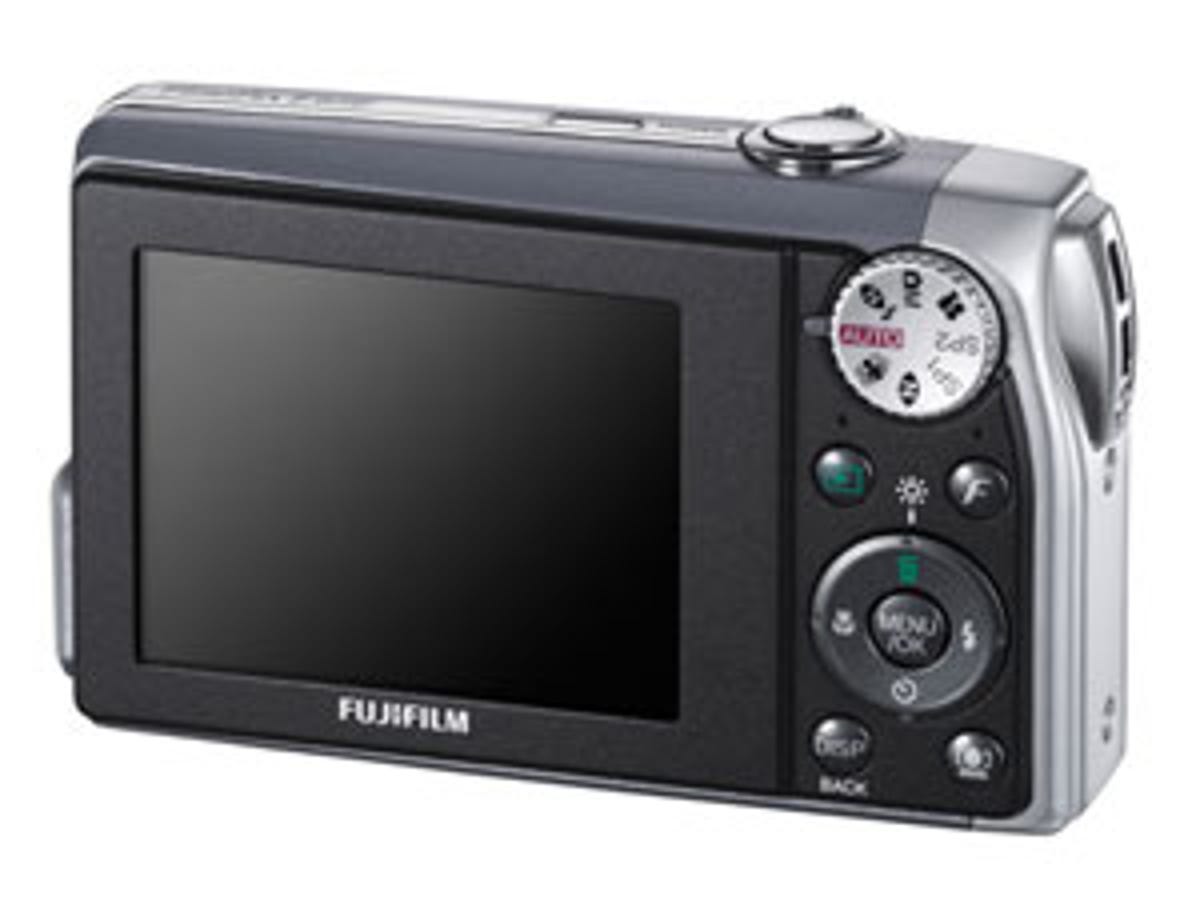 Why You Can Trust CNET
Why You Can Trust CNET Fujifilm FinePix F40fd review: Fujifilm FinePix F40fd
Fujifilm's FinePix F40fd features face detection, dual memory card compatibility and it promises good-quality images at high ISO ratings, meaning you should get better shots in low light -- not a bad offering for a little compact that costs just £150
The 8.3-megapixel Fujifilm F40fd is one of the first FinePix cameras to feature dual memory card compatibility, as well as a face detection function. With a high ISO rating promising good pictures in low light, is it worth its £150 price tag?
The Good
The Bad
The Bottom Line
Design
One of the best things about this camera is its dual memory card format capability. The F40fd holds both Fujfilm's own xD cards and the cheaper Secure Digital (SD) format, which we applaud. But quick card changes while mounted on a tripod are out of the question as you can't get to the battery easily.
The F40fd feels solidly weighty, and the gunmetal version certainly looks good compared to the anonymous overall styling of rest of the FinePix range. It's great for straight-out-of-the-box shooting, with a clear control layout and easily navigable menus.
Large pop-up captions, like semi-transparent speech bubbles, explain each function on the bright LCD screen. Unfortunately these can't be turned off, which becomes irritating when you are used to the camera settings, but while you're finding your way about the easily readable text is extremely helpful -- it even makes sense of buttons with multiple uses by spelling out what is available in your current mode. In image stabilisation mode, for example, there are reduced flash options and the ISO is fixed to auto, but all this is explained on the screen.
This friendly interface more than outweighs the minor gripes we have with the design, such as the fact that some of the buttons -- particularly the playback button -- don't do what you'd expect them to. We found the mode dial slightly flat and tricky to rotate, too.

Features
Face detection may be the headline feature, but it isn't perfect. You toggle it on and off with a discrete button and it automatically focuses on up to ten faces. Disappointingly, face detection struggled when there was more than one face in the frame -- it tended to hunt around picking up random objects, such as, on one occasion, another camera.
The F40fd can work out whether pictures should be rotated to portrait or landscape by the orientation of the faces in them, however sometimes this feature doesn't work. When several faces appear in the image, the camera is clever enough to be able to tell a printer to cough up one print per person. We're not sure why you'd want this feature, but it's there.
Unfortunately, the image stabilisation mode isn't on all the time. When you select it, the F40fd simply sets a low shutter speed and locks most of the other settings accordingly. This copes well with even low-light conditions, but does limit your manual control in this mode.
Other modes include timesaving SP1 and SP2 settings, which allow you to save your two most recent shooting modes. If dividing your time between shooting kids and adults at a family gathering, you could switch between fast motion-capturing 'sport' and more sedate 'portrait'.
Performance
The F40fd is blisteringly fast. Without flash, focus lock is lightning-quick, and when focus is locked with a half-press of the shutter release, subsequent shutter response is near instantaneous. When required to focus, images are captured in a still-pretty-sharpish 0.6 seconds.
A continuous autofocus setting sees the F40fd constantly refocusing on whatever you point it at, which leads to correspondingly nippy shutter response but does drain the battery. Nevertheless, we had no complaints about battery life.
Flash doesn't slow it down much, either. 'Natural and flash' mode is a good idea -- it takes two photos and compares them side-by-side, one with flash and one without. Using this mode, however, does limit your choice to just standard or red-eye reducing flash rather than the five flash modes available elsewhere. Each image takes 0.5 seconds to capture, and the whole process takes up to 7 seconds to store the images and return to photo readiness.
Although image stabilisation mode limits your manual control, it does produce excellent photos. Fujifilm has concentrated on making the most of a larger sensor, in all modes, so even when set to ISO levels as high as 2,000 noise is barely a problem. The flash is excellent at adjusting its intensity to meet lighting conditions, and low-light picture quality is strong enough in all modes to frequently get by without flash.
Conclusion
The Fujifilm F40fd is easy to use, with a plethora of presets and strong automatic abilities giving excellent pictures. The experienced photographer will find plenty to love in the accessible manual settings, good picture quality and super-quick response. You might prefer the Canon Digital IXUS 950 IS, which has a bigger zoom and a viewfinder, but then it costs more and lacks the excellent picture quality at higher ISO settings.
The F40fd's little details like dual-card compatibility, a clear interface and customisable favourite modes add up to make this an accessible and clever compact.
Edited by Jason Jenkins
Additional editing by Kate Macefield


